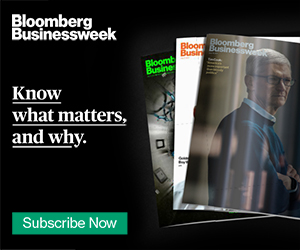In today’s competitive market, where consumers are bombarded with choices, it’s essential for brands to find ways to stand out. One often-overlooked but highly impactful aspect of branding is custom packaging design. In this article, we’ll explore the significance of custom packaging and how it can elevate your brand identity, engage customers, and drive sales.
Understanding Custom Packaging Design
Custom packaging design goes beyond merely enclosing a product; it’s a strategic tool for brand communication. It encompasses the visual and structural elements of packaging tailored to reflect the brand’s identity and resonate with its target audience. Custom packaging serves as a tangible representation of your brand’s values, personality, and quality.
Key Elements of Effective Custom Packaging Design
Effective custom packaging design integrates several key elements to create a cohesive and compelling brand experience. Visual appeal plays a crucial role, as it catches the consumer’s eye and communicates the brand’s message at a glance. Additionally, functionality is vital to ensure that the packaging serves its practical purpose while enhancing the user experience.
The Design Process
Crafting custom packaging involves a meticulous process starting from research and ideation to prototyping and final production. Designers collaborate closely with clients to understand their brand identity, target market, and product specifications. Through iterative refinement, they translate concepts into tangible designs that capture the essence of the brand.
Choosing the Right Materials
Selecting the appropriate materials is a critical decision in custom packaging design. Factors such as durability, eco-friendliness, and visual appeal must be carefully weighed to align with the brand’s values and consumer expectations. Sustainable packaging options are gaining traction, reflecting the growing concern for environmental sustainability among consumers.
Incorporating Brand Identity
Custom packaging provides an opportunity to reinforce brand identity through strategic elements such as logo placement, color schemes, and typography. Consistency across all touchpoints fosters brand recognition and builds trust with consumers. Every aspect of the packaging should reflect the brand’s unique identity and values.
Standout Features and Innovations
To capture consumers’ attention in a crowded marketplace, brands are incorporating innovative features into their custom packaging. Interactive elements, personalized messages, and unique structural designs create memorable experiences that leave a lasting impression on customers. These creative touches differentiate brands and foster deeper connections with their audience.
Balancing Creativity with Cost-effectiveness
While creativity is essential in custom packaging design, it must be balanced with practical considerations such as budget constraints and production feasibility. Designers must find innovative solutions that maximize impact while staying within budgetary limits. Collaboration with experienced professionals can help navigate these challenges and achieve optimal results.
Collaborating with Design Professionals
Working with experienced designers can streamline the custom packaging design process and ensure a successful outcome. Clear communication, mutual respect, and a shared vision are essential for productive collaboration. Design professionals bring expertise, creativity, and fresh perspectives to the table, elevating the brand’s packaging to new heights.
Case Studies and Examples
Examining successful custom packaging designs provides valuable insights into effective strategies and best practices. Real-world examples illustrate how brands have leveraged custom packaging to enhance their brand image, engage customers, and drive sales. By learning from these case studies, brands can glean inspiration for their packaging endeavors.
Measuring Success and ROI
Tracking key performance metrics is essential to evaluate the effectiveness of custom packaging designs. Metrics such as customer feedback, sales data, and brand perception indicators provide valuable insights into the packaging’s impact on consumer behavior and brand perception. By analyzing these metrics, brands can make data-driven decisions to optimize their packaging strategy.
Future Trends and Predictions
As consumer preferences and market dynamics evolve, the future of custom packaging design is marked by innovation and adaptation. Emerging technologies such as augmented reality and smart packaging offer exciting possibilities for immersive brand experiences. Anticipating these trends and staying ahead of the curve allows brands to remain relevant and competitive in the ever-changing landscape.
Conclusion
In conclusion, custom packaging design is a powerful tool for brands to differentiate themselves, connect with consumers, and drive business growth. By investing in innovative packaging solutions that reflect their brand identity and resonate with their target audience, brands can make a memorable impression and stand out in a crowded marketplace. As consumer expectations continue to evolve, custom packaging will remain a cornerstone of successful branding strategies, ensuring that your brand remains relevant and competitive in the digital age.

